Continuous torrential rains in Colombia cause flooding global coffee supply shortages exacerbate price rises
Floods have occurred in many parts of Colombia
According to a report on Colombia released by the Rescue Network (ReliefWeb) on 8 September, a dam used as the retaining wall of the Cauca River overflowed that month after unusually heavy rains in parts of Ramohana, northern Bolivar, Sucre, Antioquia and Cordoba.
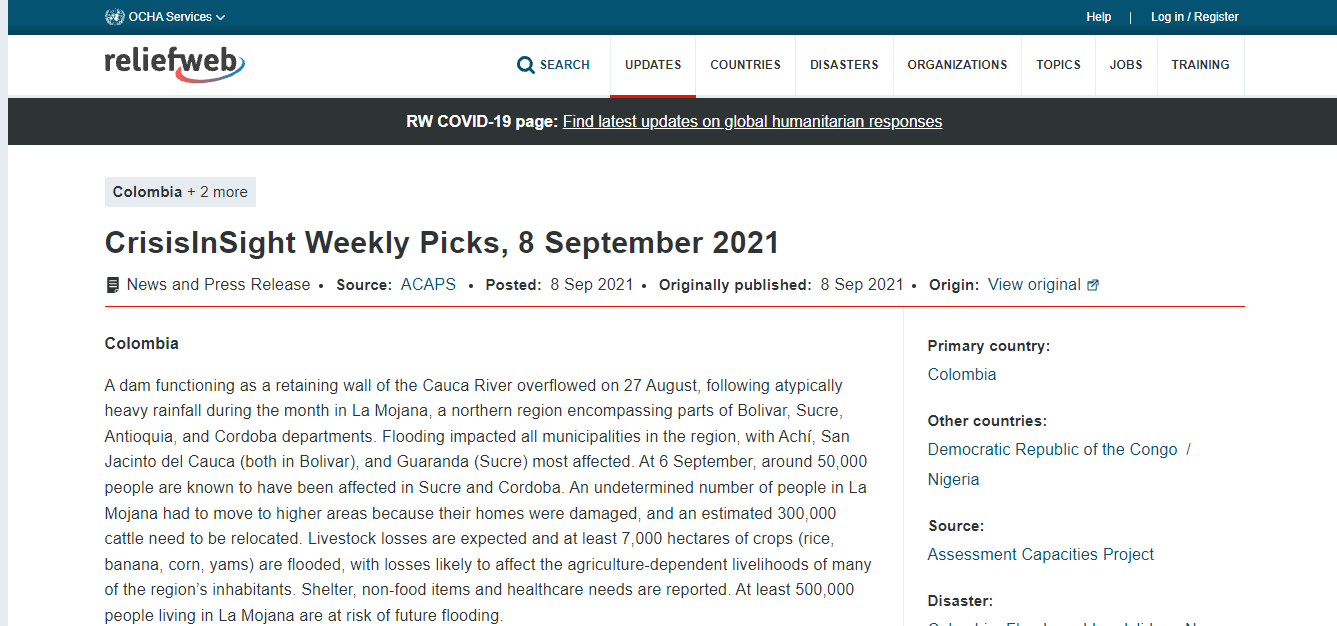
The floods affected all cities in the region, with Archie, San Jacinto-Delcoka and Guaranda the most affected. On 6 September, about 50,000 people were known to have been affected in Sucre and Cordoba. As a result of the destruction of houses, an unknown number of people in Ramojana have had to move to higher-lying areas, with an estimated need to relocate 300000 head of cattle, flooding at least 7,000 hectares of crops, and impairing the agricultural livelihoods on which many residents in the area depend. At least 500000 people in Ramoana are threatened by future floods.

According to a separate report released on September 22nd, several severe weather events, including heavy rain and strong winds, caused floods, flash floods and landslides in 70 cities in Colombia's 19 provinces from September 1 to 20, according to Colombia's National disaster risk Management (UNGRD).
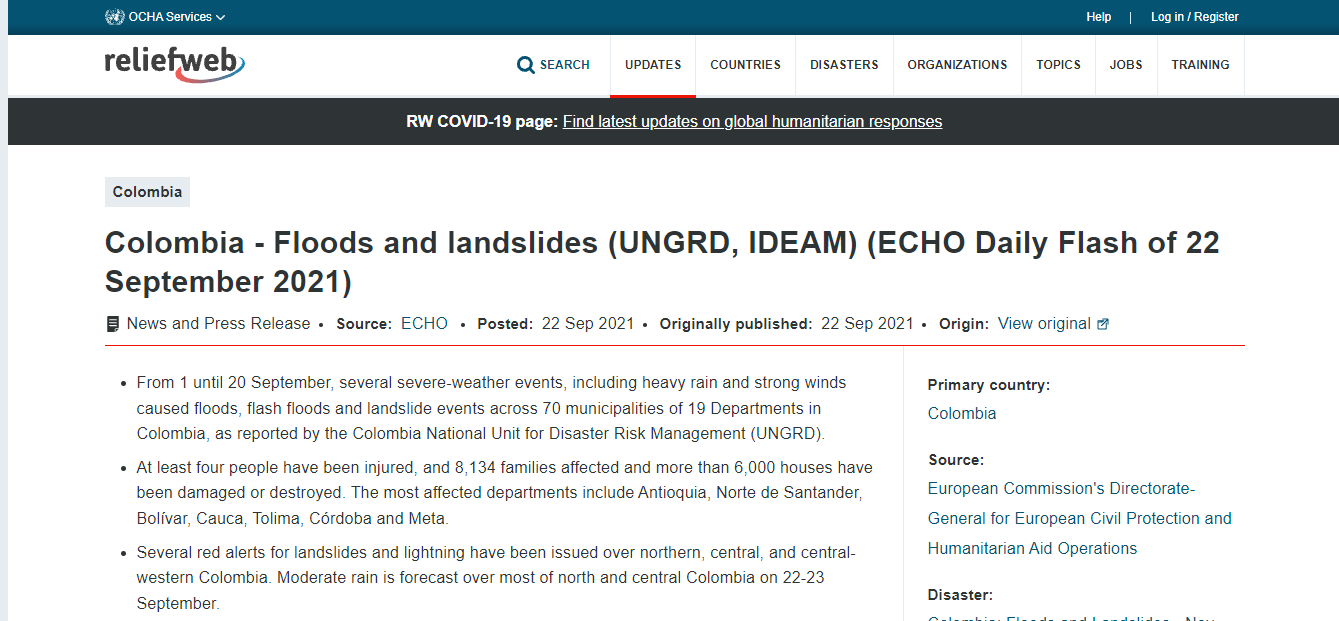
At least four people were injured, 8134 families were affected and more than 6000 houses were damaged or destroyed. The worst affected provinces include Antioquia, Northern Santander, Bol í var, Cauca, Tolima, Cordoba and Meta.
Red alerts for landslides and thunderstorms have been issued in northern, central and mid-western Colombia.
The prospect of coffee production in Colombia is worrying
According to Bloomberg on Sept. 25, the outlook for coffee production in Colombia has deteriorated due to a wide range of strong and high rainfall.
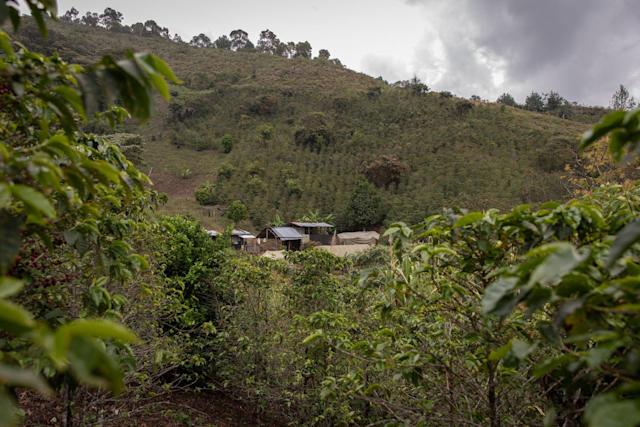
Maxar Technologies Inc, a geospatial intelligence company. In a telephone interview with Bloomberg, a senior meteorologist said that the weather in the main crop-growing areas is so humid that rainfall has far exceeded their need for water, and in the next 10 days or weeks, rainfall will bring more water to these areas.
Colombia's current woes are likely to exacerbate the shortage of global coffee stocks in the next quarter. The inventory crunch caused by the collapse in Brazilian coffee production has been complicated by soaring costs and headwinds in shipping. These factors have led to the expected increase in the cost of coffee brands, and the increased costs may be added to the end consumers.
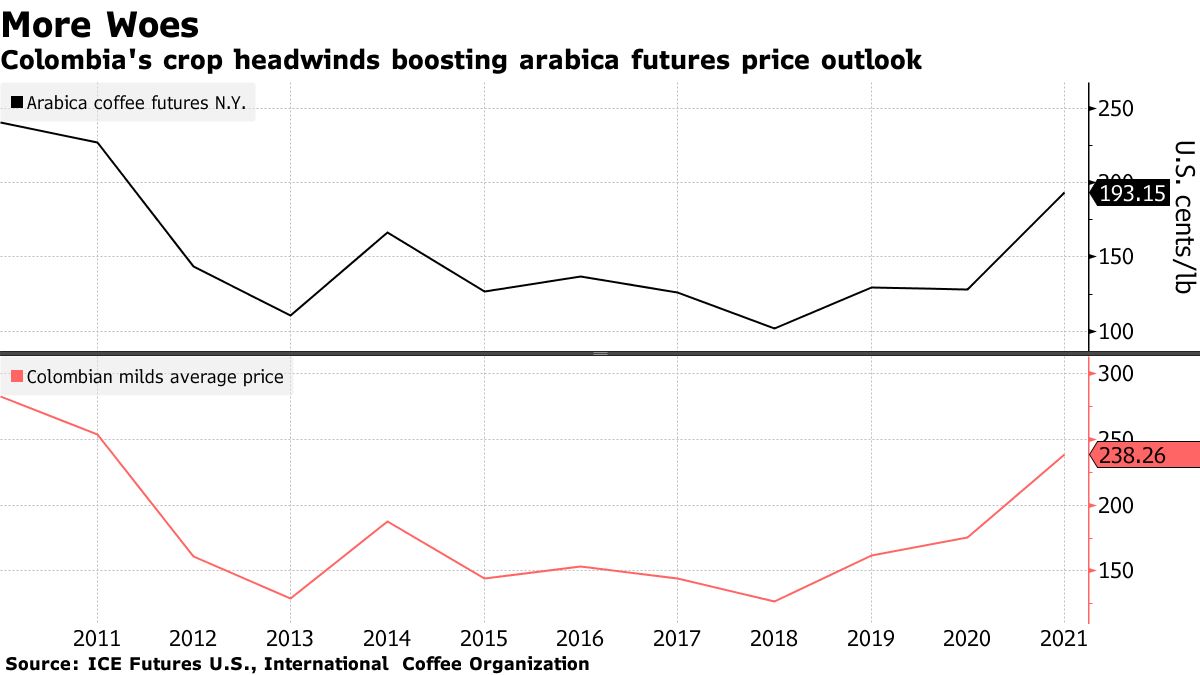
Brazil's production this year is down about 18 million bags from the same period last year, accounting for about 40 per cent of the country's Arabica production. This decline exceeds Colombia's annual production of about 14 million bags (60 kg / bag). Brazil and Colombia alone account for about 2/3 of the world's Arabica coffee supply. New York futures prices have soared more than 50% so far this year.
Buyers are more worried about the default of Cannon.
Tight supply and tighter supply have also heightened fears of default by Colombian Canon, who may fail to honor contracts signed when prices are low.
Earlier this year, the Colombian Federation of Coffee growers called on farmers to avoid default because of protests that led to port delays and complaints from buyers.
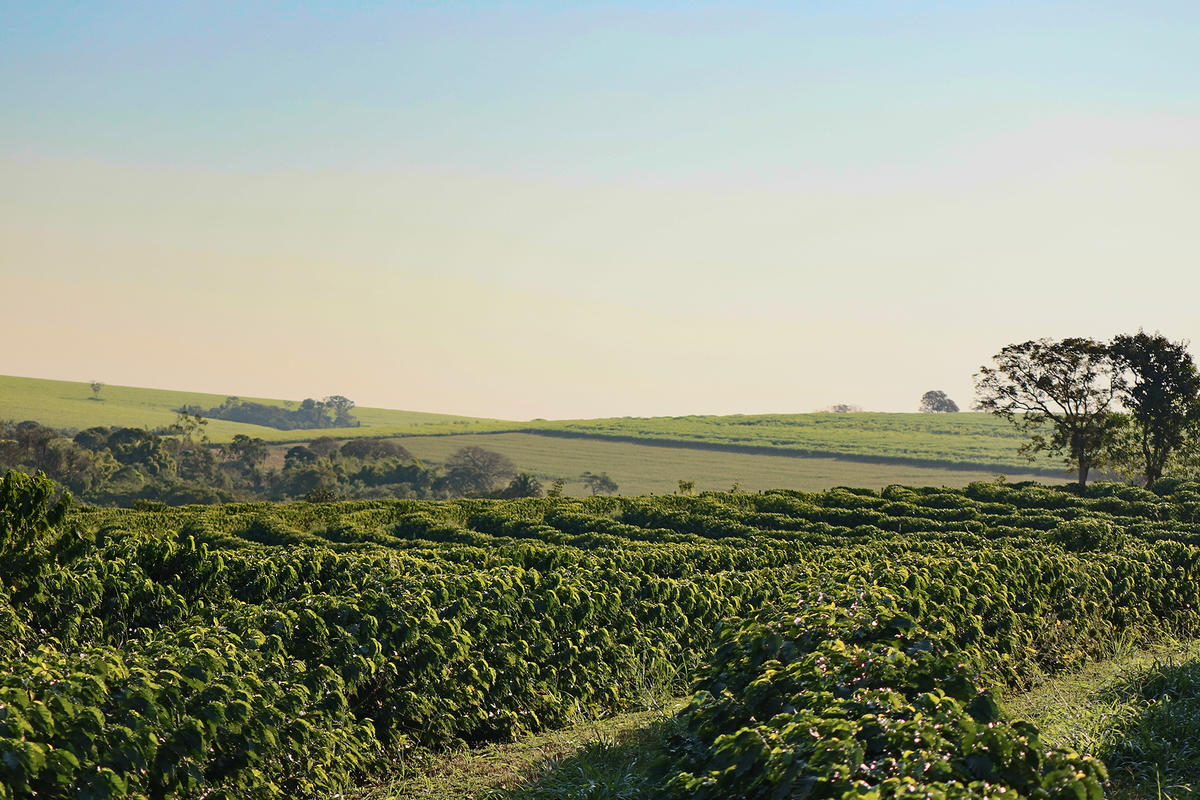
The situation in South America further complicates the industry, which has been challenged by soaring fertilizer and energy costs, shipping disruptions and epidemic restrictions in places such as Vietnam, and the market is facing growing supply shortages.
For more information about coffee beans, please follow the coffee workshop (Wechat official account cafe_style)
For professional coffee knowledge exchange, please add Wechat account kaixinguoguo0925.
Important Notice :
前街咖啡 FrontStreet Coffee has moved to new addredd:
FrontStreet Coffee Address: 315,Donghua East Road,GuangZhou
Tel:020 38364473
- Prev

The types and names of milk tea can Daquan honey-scented black tea make milk tea? share the production process.
Other types of milk tea Hokkaido milk tea is unique to Japan. Other milk tea recipes are popular in many parts of Asia, as well as in Britain and former British colonies. Similar to Hokkaido milk tea, Hokkaido milk tea is based on black tea and contains milk and sweeteners such as brown sugar, honey or caramel. Traditionally, this kind of milk tea is used daily.
- Next
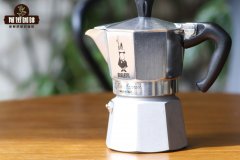
A guide to the use of mocha pots: a guide to what coffee beans taste good in mocha pots
Mocha pot, which belongs to the Italian national class coffee brewing utensils, is said to have 8 regular mocha pots in every 10 Italian households. However, the domestic audience is basically very small, so there has not been a comprehensive explanation on the way the mocha pot is used. This time, Qianjie Coffee will teach the use of this mocha pot. The structure and principle of the mocha pot the mocha pot is divided into upper pot,
Related
- Beginners will see the "Coffee pull flower" guide!
- What is the difference between ice blog purified milk and ordinary milk coffee?
- Why is the Philippines the largest producer of crops in Liberia?
- For coffee extraction, should the fine powder be retained?
- How does extracted espresso fill pressed powder? How much strength does it take to press the powder?
- How to make jasmine cold extract coffee? Is the jasmine + latte good?
- Will this little toy really make the coffee taste better? How does Lily Drip affect coffee extraction?
- Will the action of slapping the filter cup also affect coffee extraction?
- What's the difference between powder-to-water ratio and powder-to-liquid ratio?
- What is the Ethiopian local species? What does it have to do with Heirloom native species?

